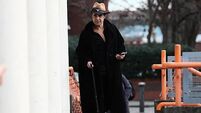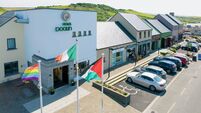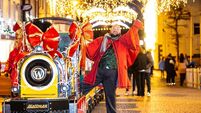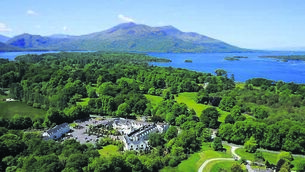A walk on the wild side
The Illinois State Capital is not amused. In fact, so such is the dim is the view held by the Chicago Historical Society now holds of the city's gangland past, there is nary a brochure nor exhibit on the Prohibition Era to be found in its entire library.
Why so? Simply put, "romantic" hoodlums are one thing, but gangs continue to peddle violence throughout Chicago today. Largely due to the drug trade, the city's murder rate is often more than 10 times that of 1926, the height of the gangster era, when 75 mobsters were killed.
Glamorising a violent past, city authorities argue, distracts from the seriousness of a violent present. Such revisionism gets up 'Dixie' Don Fielding's nose. Together with 'Southside' Craig Alton, he runs Untouchable Gangster Tours, a theatrical tour of Prohibition-era Chicago.
Despite Dixie's shirt, tie and fedora however, despite the fact that he entertains 25,000 tourists a year, the Chicago Tourist Board refuses to acknowledge his existence.
It all started in 1968, he explains, chugging his converted school bus into first and setting off up North Clark Street. A Democratic National Convention was scheduled for Chicago and then Mayor, Richard J Daley, reckoned the honour an ideal opportunity to begin the purging process.
On his orders, the SMC Cartage Company at 2122 North Clark Street, site of the infamous Valentine's Day Massacre, was bulldozed, and a retirement home erected. in its place.
Since then, Dixie says "there's been no stopping them". Al Capone's erstwhile headquarters at the Lexington Hotel has been razed. The empire of gambling, prostitution and speakeasies that once made the South Side Levee District "one of the most morally bankrupt spots in all of western culture", has been gentrified.
The hardest blow came in 1999, when the Untouchables' bus, for years a novel presence on Chicago streets, was forbidden to stop alongside scenes of crime.
To understand the process, Dixie recommends, "you gotta turn back the clock". Even before Prohibition, this gateway to the unsettled lands of the West was proving a fertile breeding ground for organised crime.
Many young frontiersmen stalled at the Windy City for a final fling and, cute to their needs, shady entrepreneurs like Big Jim O'Leary (whose family cow reputedly started the great fire of 1871) laid on a plethora of saloons, gambling parlours and brothels.
"If the Angel Gabriel came to Chicago," Dwight Moody, founder of Chicago's Moody Bible Institute, commented at the time, "he would surely lose his character within a week".
Alcohol was seen as a major problem; Prohibition its logical solution. But efforts to make the US dry found little favour here.
Vast numbers of German, Irish and Polish immigrants had already made Chicago their home, and in an advisory referendum held prior to the federal enactment of Prohibition in 1920, voters from these communities went against the proposed law by a ratio of six to one. Their vote, understandably, was an important one at local level. Nor was their thirst eliminated by the National Prohibition Enforcement Act. Demand for illegal goods and services spilled forth into the vacuum that was created one that well-organised criminal syndicates had cannily anticipated.
Take the North Side Gang, headed by Dion O'Bannion. Raised in the Near North Side shantytown of Kilgubbin, O'Bannion and his followers, George 'Bugs' Moran, Earl 'Hymie' Weiss, and Vincent 'The Schemer' Drucci were an accomplished quartet of highjackers, burglars and safecrackers.
Where Klondike O'Donnell and his brothers, also Irishmen, controlled the Near North West Side of the city, O'Bannion's territory was the Near North.
A colourful and charismatic boss, the former choirboy's ability to deliver the Irish vote made him a crucial figure in Ward politics so much so that he was once given a testimonial dinner attended by the then Commissioner of Public Works and Chief of Detectives.
Their presence was no coincidence. Around the time of Prohibition, Dixie explains, hoards of police officers and city officials were on the take, some to the tune of $1,000 a week a spectacular sum at the time.
In exchange for delivering the vote, O'Bannion and his gang were allowed to continue their criminal activities.
In return for a payment, crooked cops turned a blind eye to proceedings or even more brazenly tend the door at such speakeasies.
"Chicago was a wide-open town," as Robert Lombardo of the Cook County Sheriff's Department put it. Bill Thompson, elected Mayor in 1927, ran on the promise that he was "as wet as the Atlantic Ocean". There is even even evidence to suggest that Al Capone himself donated $260,000 to Thompson's election fund.
Nor was the irony of his trade lost on Scarface. Commenting at the time on a society that banned booze and then paid him a fortune to sell it, Chicago's most notorious gangster quipped: "When I sell liquor, they call it bootlegging. When my patrons serve it on silver trays on Lake Shore Drive, they call it hospitality". Is it any wonder, Dixie says, that contemporary authorities are washing their hands of the era?
The business of booze was a cut-throat one, however; its entrepreneurs lived short lives. After crossing Capone in 1924, Dion O'Bannion was gunned down in Schofield's Florists (now a parking lot) on North State Street.
(Schofield's, Dixie points out, somewhat conspiratorially, is now a parking lot).
We stall for a second at the nearby Holy Name Cathedral. A torrent of Capone-ordered bullets was unleashed here in 1926, tearing to pieces O'Bannion's partner in crime, Earl 'Hymie' Weiss. to pieces. Many bullets passed through his body, ripping into the Cathedral's façade.
"You could have seen the pock marks until recently," Dixie says. "Now they're somewhere behind that new stairwell."
Born in Kerry and standing an intimidating 6'2", George 'Bugs' Moran, a one-time sean-nós singer, didn't let the killings go unpunished. After O'Bannion's death, Bugs and his cronies sprayed Capone's car with bullets outside a State Street restaurant.
Big Al was smart, however. Dodging a murder rap in Brooklyn, he had relocated to Chicago with his Irish wife in 1919, and found his star quickly in the ascendant.
Few doubted the reason. Capone had a simple philosophy where rivals were concerned: kill them. He ducked, dodged Moran's fire, and responded shortly thereafter with the Valentine's Day Massacre.
At 9.30am on February 14th, 1929, Moran nicked himself shaving. Delayed by six minutes, he stepped from his apartment at the Parkway Hotel and headed for the SMC Company Garage on North Clark Street, where a rendezvous with several of his gang had been arranged.
From a distance, he noticed a police car sitting at the entrance. Instinct prevailed. Moran turned and walked away. Those six minutes saved the Irishman's life.
At 10.30am, a black Cadillac pulled up in front of the garage. Five men dressed in police uniforms got out, left the engine running, and drilled the unsuspecting North Side Gang with bullets. Blood flowed freely. Police reports would later note that some of the seven bodies were held together only by shreds of flesh and bone.
Moran may have survived, but the St. Valentine's Day Massacre marked the end of the O'Bannion gang. By 1930, the Chicago Daily News estimated that Capone controlled 6,000 speakeasies.
Combined revenue from liquor, prostitution and racketeering was netting him up to $6,260,000 a week. By killing off his Irish opposition, the 31-year-old had become the supreme overlord of crime in Chicago.
The official line on Irish emigration to the US emphasises the role millions of hardy souls played in the construction of a great nation, consistently neglecting men like Moran and O'Bannion.
Their legacy, and that of others like the Gophers who, reminiscent of Scorcese's Gangs of New York, specialised in robbing shops and looting the Hudson Railroad, worries the traditional image of the Irish Abroad.
Could Chicago's story offer perspective, a more generous way of developing our own immigration policies?
Meanwhile, though guns largely fell silent following the lifting of Prohibition in 1933, Chicago's image as gangster capital of the world proceeded to burn itself into popular consciousness.
Hollywood couldn't get enough of Capone, TV shows lapped up the roarin' 20s, and one suspects the sharply-dressed, gun-toting mobster, despite the city's best efforts, will be around for some time to come. Try as the authorities might, and 'Dixie' Don Fielding laughs at the thought, this is one piece of history historical period that won't be sleeping with the fishes.









